George Reed was Burnham’s greatest benefactor during the Victorian period and was responsible for a great number of significant changes to the town from his arrival in the late 1830’s to his death at the Manor House in 1869.
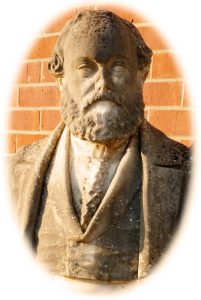
2019 is the 150th anniversary of George Reed’s death. As a commemoration of this a research project has been undertaken to fill out further details of his background, life and achievements. Blue Plaques have been placed on both the Manor House (thanks to Watermark Wealth Management) and St Andrew’s School. A small exhibition is to be mounted in Burnham Library (24th June ), moving on to St Andrew’s Church (5th July) and then to St Mary’s Church, East Brent. (25th July).
THE LIFE OF GEORGE REED – Timeline
1805 6th May – George baptised, Holy Trinity Church, Westbury on Trym. Mother Susanna Cavil. Paternity not recorded.
1834 – George living in Congresbury, bankrupted by unsuccessful corn and provisions business in Bristol.
1836 25th May – Joseph Haythorne, George’s step-father, buried at Clifton. £2,000 bequeathed by him to George, the balance of his estate to George’s mother Susanna.
1837 Total of lands and Manor of East Brent offered for sale in one lot. Susanna Haythorne purchased this lot.
1838 24th May – Total of £30,000 offered for loans by George (over £3 million at 2019 values). Possibly from Susanna’s inheritance.
1838 9th July – George initiated into Masonic Lodge, Bridgwater.
1841 census – George (35 years old), of “independent means” and living in ‘Church St’ (now Manor Road), Burnham. It is believed he lived in an old house situated between the site of Brunswick Terrace and the site of the Manor House, before having the Manor House built as his new residence in the same year.
1842 – Lucerne Cottage built on the Berrow Road and developed by George as a tea garden. It became known as the ‘Puzzle Garden’ due to its maze.
1849 – George by now Chairman of the Burnham & Highbridge Board of Health (mentioned in Rammell’s Report on Sanitation)
1850’s-60’s – Planning / building of Catherine and Julia Terraces, North Esplanade, named for George’s daughter and granddaughter. Actual dates are uncertain but Julia Terrace was not completed until several years after Catherine Terrace.
1851 – George commended for his orchids at an exhibition in Cheltenham. He continued to be a noted orchid grower for many years.
1854 – George’s son Joseph Haythorne Reed was MP for Abingdon 1854 -1857 (this may be the origin of the name of Abingdon St which was developed in 1858 after Joseph’s death).
1854 – Sudden death of George’s mother. Bulk of estate of over £160,000, including Manor of East Brent, inherited by George.
1855 – Laying of the Foundation stone for George Reed’s new National School on the sea front (Wells Journal). The same source reported the school was in use by late 1856 and formally opened 1857.
1857 – Extension of Somerset Central Railway from Wells to Burnham nearing completion (Wells Journal), George had by now been appointed as director. Burnham Jetty under construction. George instrumental in planning.
1858 3rd May – Railway and steam ship service began. The ‘Iron Duke’ was the first passenger ship to arrive at the Jetty (Bridgwater Mercury). Burnham – Cardiff ferry service began on 24th May.
1858 4th August – Laying of the foundation stone for the Reed’s Arms by George’s grand-daughter (Bridgwater Mercury & Western Counties Herald). Hotel formally opened at a dinner ceremony on 27th October 1860.
1858 2nd Nov – George Reed, now chairman of the Burnham Gas Company, laid foundation stone of Burnham Gas Works (Shepton Mallet Journal).
1859 – On behalf of the Gas Company George presented a plan to the Local Board of Health for the installation of gas street lighting in Burnham.
1859 – George opened the Manor House Gardens to the public. Burnham Guide of that year says he opened his “gardens and extensive hothouses… every Tuesday and Friday between the hours of 11am and 4pm upon application to the head gardener.”
1860 – Burnham Tidal Harbour and Railway Company incorporated by Act of Parliament (extended 1866). George Reed had a substantial financial stake in the company.
1860’s – George involved in a number of substantial property transactions in the town, including sale of the Customs House in 1865.
1865 – George purchased a railway locomotive and leased it at very favourable terms to the Somerset & Dorset Railway .
1866 – The BTHRC commissioned a new screw-driven steam ship and named it the ‘George Reed’. However it only remained in company service for a year before being sold.
1866 – Railway and BTHRC in financial difficulties
1869 22nd June – Death of George Reed at the Manor House by natural causes.
BACKGROUND
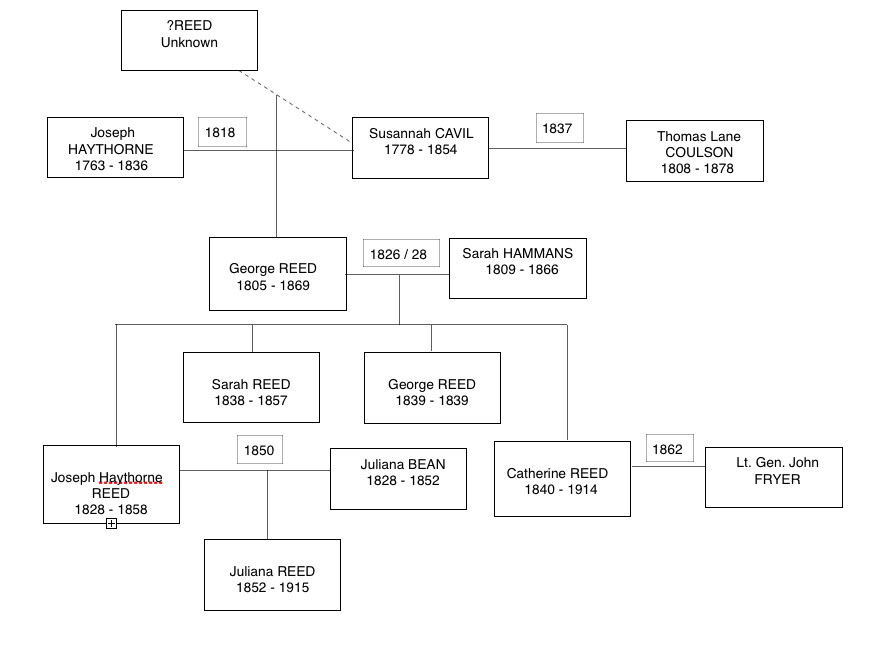
George was born to Susannah Cavil / Reed (also sometimes known as Susanna or Susan) at Westbury-on-Trym in 1805. At this time Susan was going under the name of Reed, though unmarried. George was baptised as Reed though nothing has been discovered about his father. Susan’s origins are at this point uncertain.
In 1818 Susan married Joseph Haythorne a widower and a scion of a banking and merchant family who later became a wealthy banker in his own right. It is on the marriage certificate that she appears as ‘Cavil’. It is not clear how the match came about, or the circumstances under which Haythorne was prepared to take on both a wife and a child not apparently his own. One account has Susan as initially working for Haythorne as a cook / housekeeper and suggests that she may have nursed him through an illness*.
Having no children of his own, Joseph appears to have got on well with his stepson George and may indeed have looked upon George as his own. The facts that George named his first son Joseph Haythorne Reed, and that on his death in 1836 Haythorne left a bequest of £2,000 directly to George, suggests a mutual respect.
The remainder of his estate he left to Susan. This caused some consternation in the Haythorne family including a complaint that the estate had been left in trust to Susan for Joseph Haythorne Reed (though the will does not specify this).
The rapid marriage of the widowed Susan to Thomas Lane Coulson in 1837 is also something of a puzzle. He was a moneyed man himself and half Susan’s age. Shortly before the marriage Susan purchased the Manor lands of East Brent. There were also some complex legal arrangements made to ensure that on her death her estate would go to George not Coulson.
We must assume that George had access to the wealth before this, however, as from being bankrupt in 1834, due to a failed corn merchant business, he was transformed into a man with £30,000 to offer for loans by 1838.
It was at around this time that George took up residence in Burnham. It appears that he was ambitious to make a name for himself in the local business and civic community as befitted his new family position as Lords of the Manor of East Brent. He was admitted to the Bridgwater Masonic Lodge in 1838.
* In ‘The History of Banking in Bristol from 1750-1899’ by Charles Henry Cave (Published privately for subscribers in 1899)
The timeline above shows the way in which George Reed’s status developed over the next 30 years.
LOCAL UTILITIES
Over the years Burnham and the agricultural land around it had suffered greatly from flooding, poor drainage, open sewers and contaminated well water among many other things. Scrofula a type of TB caused by drinking infected milk was prevalent among children. Outbreaks of cholera, typhus, ague and fevers were frequent due to the damp from flooding and unsanitary conditions of the poorer cottagers.
In 1849 George among others was concerned about the state of the drainage and sanitary conditions in Burnham in general. He instigated the setting up of a Local Board of Health.
During the Preliminary Inquiry by the Superintendent of the Board of Health Thomas Webster in 1850, George commented that the agricultural soil in and around Burnham was so sodden and foul that he could bring soil from Brent Knoll into his greenhouse in which he could grow pineapples, but that this was impossible with the soil in Burnham! George proposed sewage from houses in the town could be drained away and onto surrounding agricultural land to improve its fertility. Work commenced on the first sewers in 1852.
Also listed for development were a means of refuse disposal, public lighting and improved paving in the town. In the late 1850’s George became a prime mover in the setting up of the gas works and the introduction of gas lighting to the town
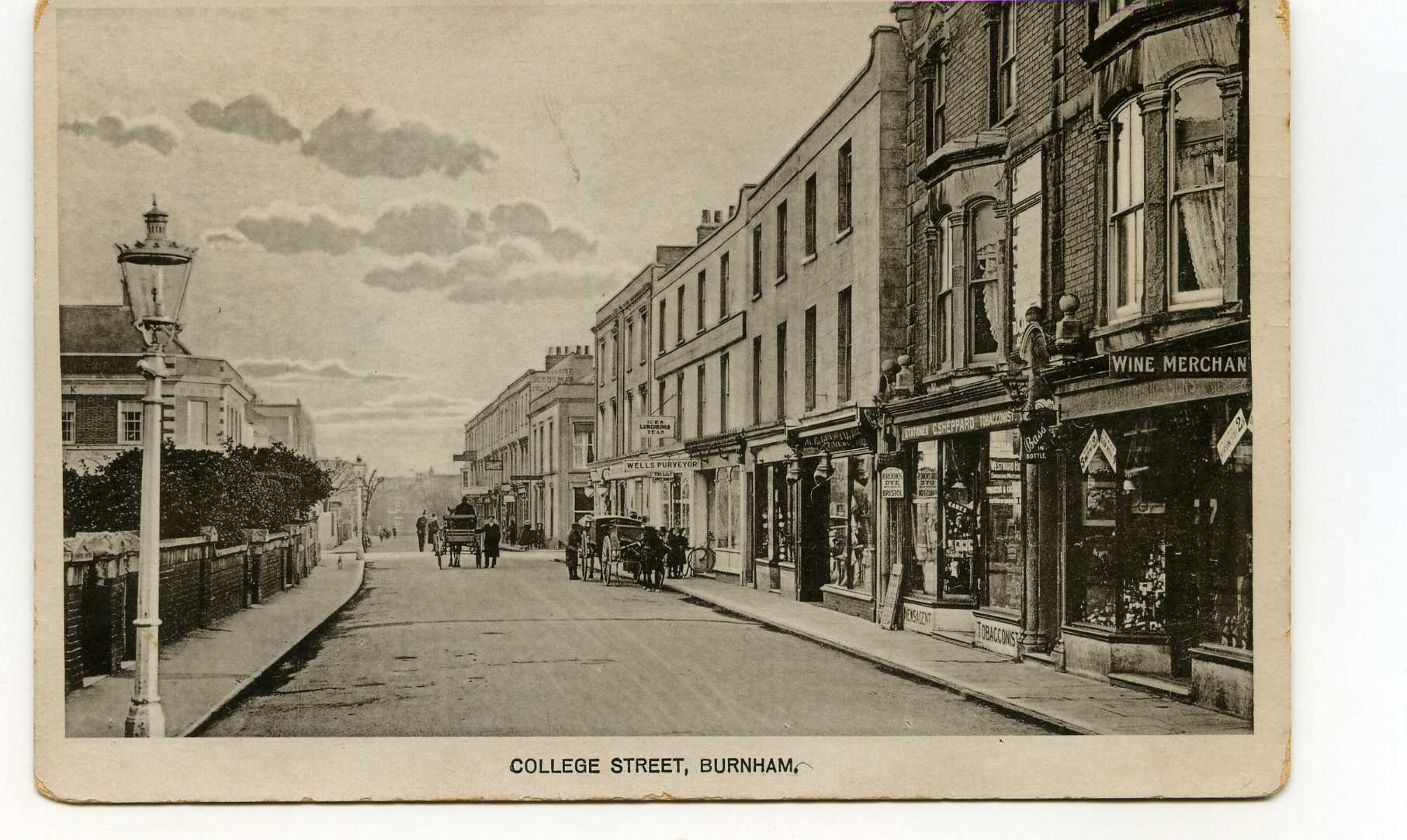 Above: Gas Lighting in College Steet
Above: Gas Lighting in College Steet
BUILDING DEVELOPMENT
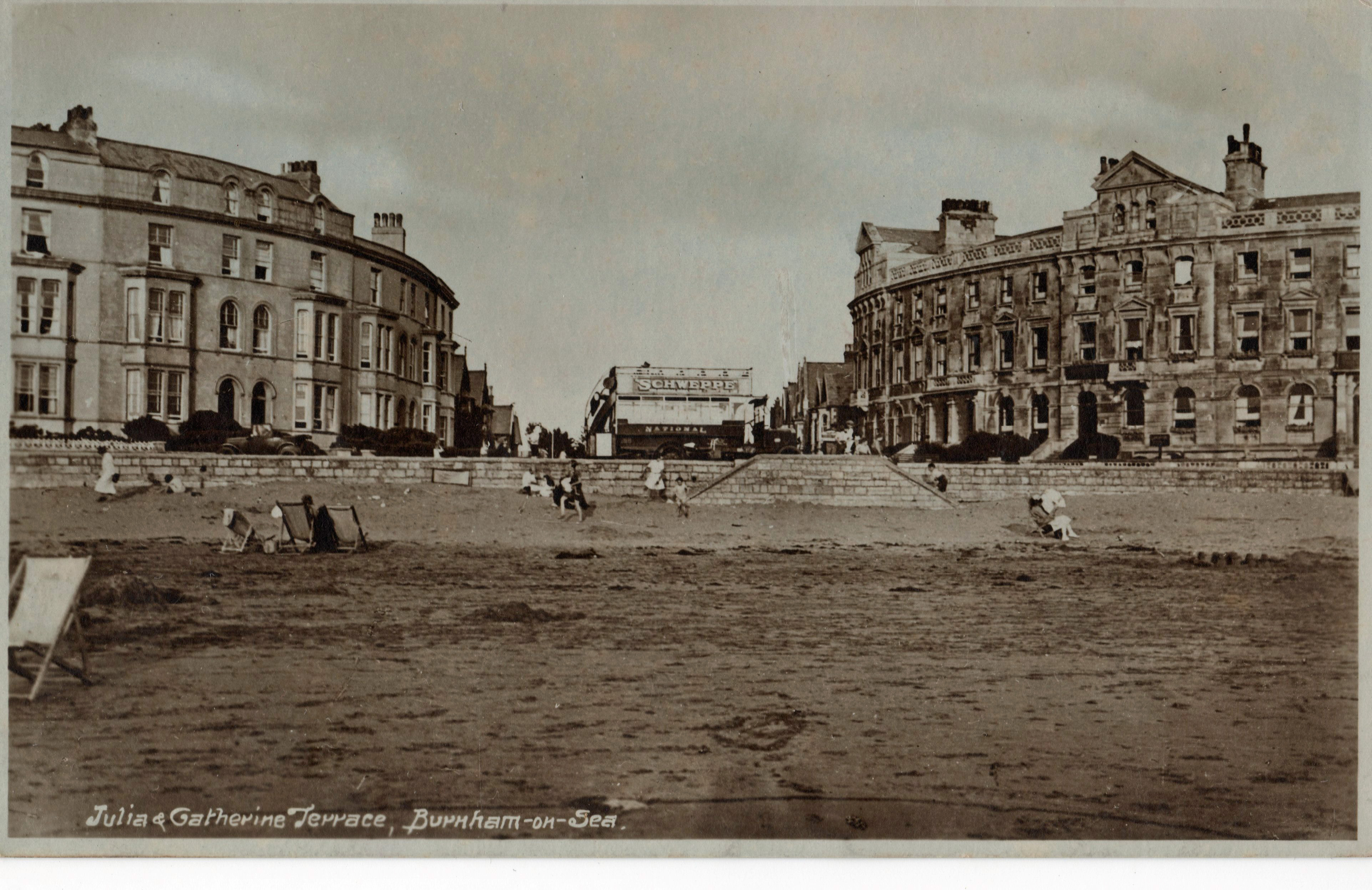
Above: Catherine (right) and Julia (left) Terraces
George undertook a number of building projects and property transactions in the town:
1841 Built Manor House.
1842 Built Lucerne Cottage (later known as the Puzzle Gardens).
1850’s – 60’s Built Catherine & Julia Terraces.
1855 – 56 Built new National School.
1858 – 60 Built Reed’s Arms & Pier Hotel.
1859 Sold brick works.
1859 Sold Ravensworth House, College Street.
1863 Also recorded as owning building land in Cross Street, College Street, Oxford Street, Abingdon Street, ‘near the Railway’ and ‘near the National School.

The plan above is taken from a Conveyance from George Reed to Henry Randell and Robert Salisbury in 1862. Henry Randell and his younger brother George were both involved in the building trade, Henry as a bricklayer and George a builder employing three men. Both lived in Abingdon Street. Henry later lived in Southwick House, Cross Street, possibly the house that was built on the site shown above. Like George Reed Henry served on the local Board of Health. Robert Salisbury is variously described as surveyor, architect, auctioneer and estate agent. He seems to have lived most of his life in Prews Terrace and was also a member of the Board of Health.
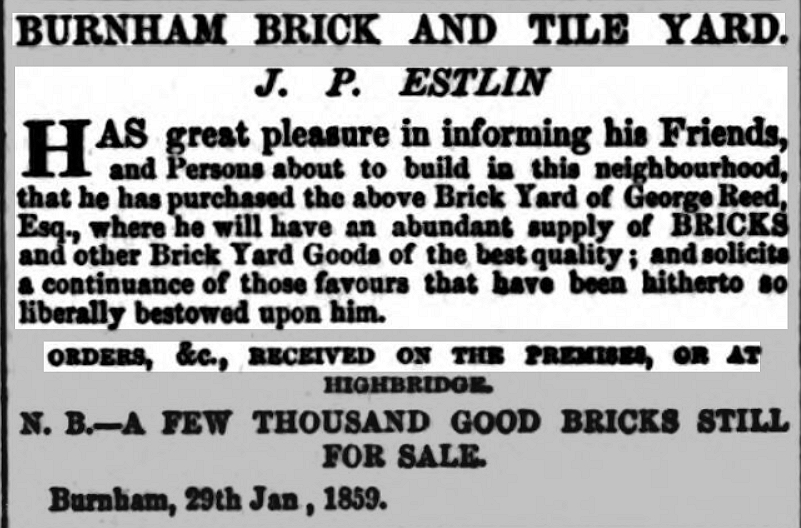
FAMILY LIFE
An ornamental plaque in St Andrew’s Church records George Reed’s family life, which saw more than its fair share of tragedy.
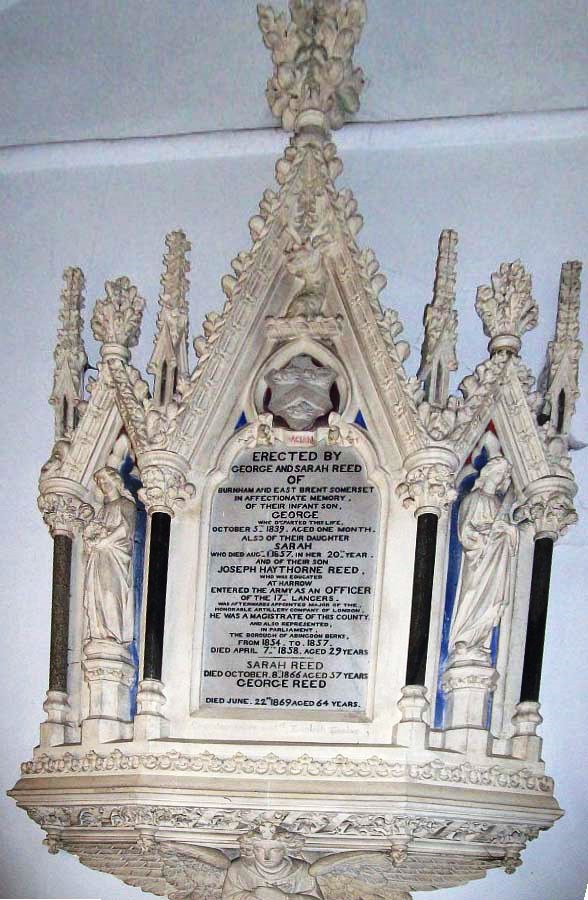
George’s second son, also named George, died in 1839 at only one month of age.
George’s first son, Joseph Haythorne Reed represented Abingdon in Berkshire as an MP between 1854 and 1857, probably giving rise to AbingdonStreet being so-called. However he died aged only 29 in 1858 after bankrupting himself whilst trying to get re-elected.
This left George’s granddaughter Juliana an orphan as Joseph’s wife had died in 1852. Juliana, known as Julia, was henceforth looked after by George and Sarah.
George’s eldest daughter Sarah had died only a year before Joseph at age 20. He donated the window below to St Mary’s in her memory .
Of his children only Catherine outlived George. She and her husband, Maj. John Fryer, lived on in the Manor House after George’s death in 1869. George’s wife Sarah pre-deceased him by 3 years.
Mrs Julia Dupuis, wife of Revd. Theodore Crane Dupuis, recorded Juliana’s wedding in the ‘Dupuis Diaries’ her retrospective account of Burnham:
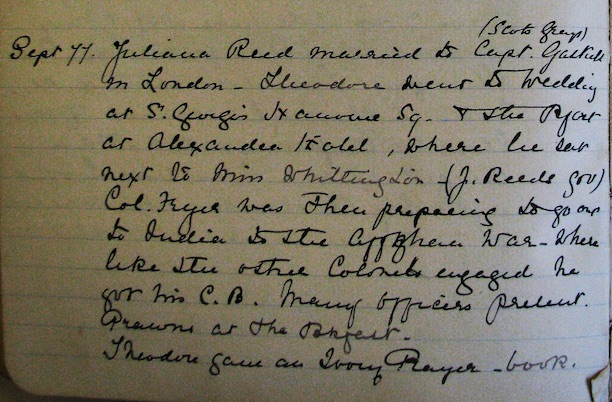
BURNHAM TIDAL HARBOUR AND RAILWAY COMPANY
In 1855 George became heavily involved with others in investing and raising stocks to bringing the Somerset Central Railway to Burnham. In 1857 he was appointed Director of the Somerset Central Railway.
George could see the potential for bringing holiday and tourist trade into Burnham by building an extension line from Highbridge right into Burnham and the sea front. He also had the vision of a ferry service to South Wales which would bring visitors from across the Bristol Channel and also allow local goods to be sent to South Wales where there was a large consumer market available. In 1858 the first railway and steamship service began.
As part of this undertaking George knew there would be an increased need of accommodation for travellers. So he set about building what might be called his most iconic addition to Burnham ‘The Reed’s Arms Hotel which still bears his name.
The project culminated in the formation of the Burnham Tidal Harbour and Railway Company and the Burnham Tidal Harbour Act of 6th August 1860. The company proposed the building of deep water docks at the confluence of the River Brue and the River Parrett. In 1865 the Act was extended until 1870. However this ambitious project never came to fruition.
In 1865 George gave a steam locomotive to the company which appears to have come from some as yet unclear mining interest he had in the Forest of Dean.
In 1866 the BTHR screw driven steam ship ‘George Reed’ entered service on the cross Channel run, together with the ‘Myrtle’ .
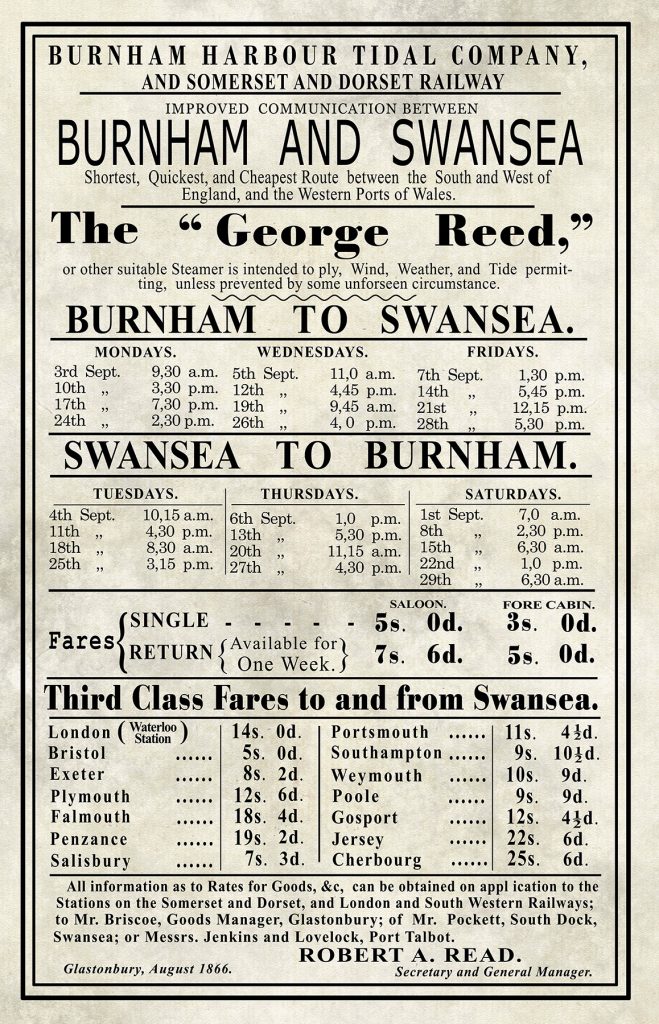
Unfortunately the whole enterprise was already in financial difficulties. The Somerset and Dorset Railway, successor to the Somerset Central, had gone into receivership in June 1866. George was about to enter court proceedings for recovery of £30,000 from him, in connection with this business, when he died. There was speculation that the financial difficulties may have contributed to his death.
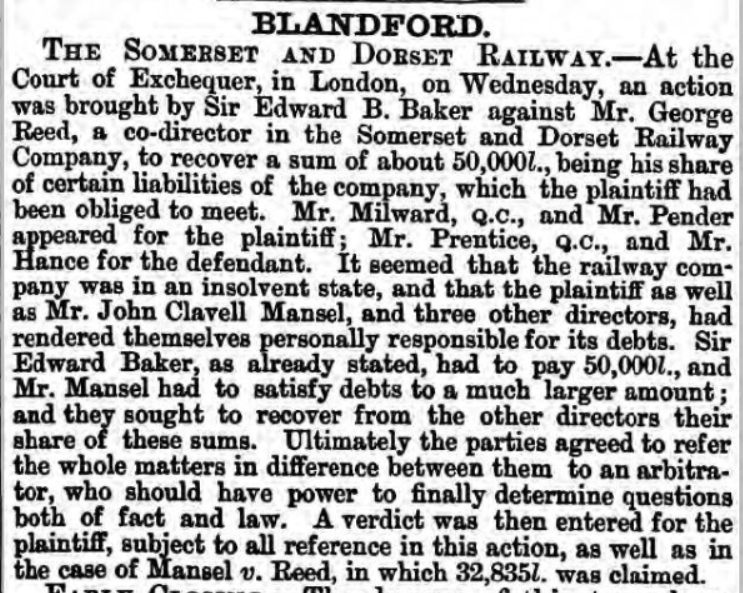
Article above from Salisbury & Winchester Journal 19/06/1869
DEATH OF GEORGE REED

The inquest was, fittingly, held at the Reed’s Arms Hotel.
Probate records of 1869 confirm that his estate was less than £18,000, though this equates to a 2018 equivalent of over £2 million.
George Reed’s grave lies in the East Brent Churchyard and had become extremely overgrown. There has recently been some clearance by volunteers but the damage from roots is considerable . Some thought is being given to whether restoration may be possible, though expense may prove to be prohibitive.
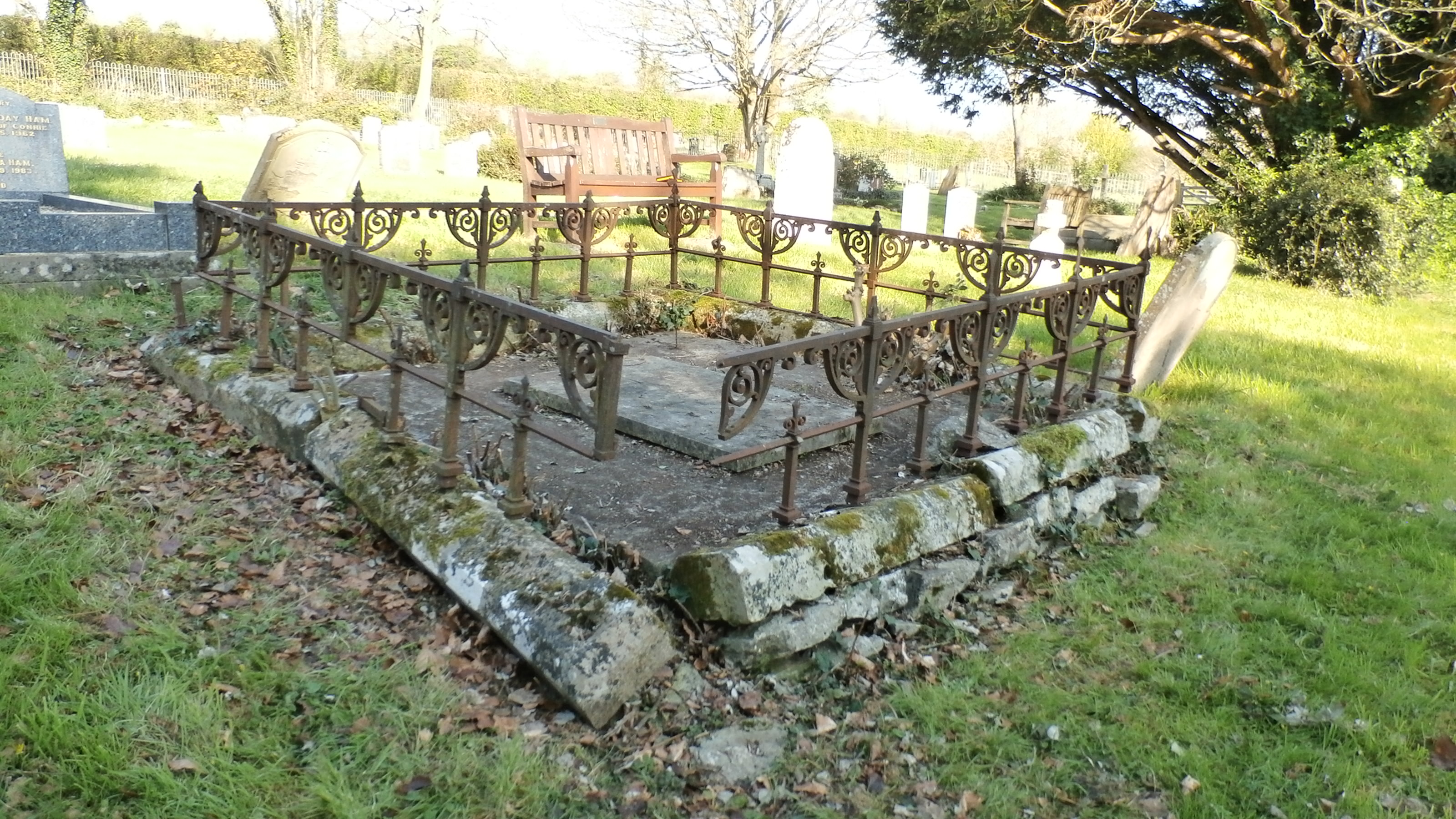
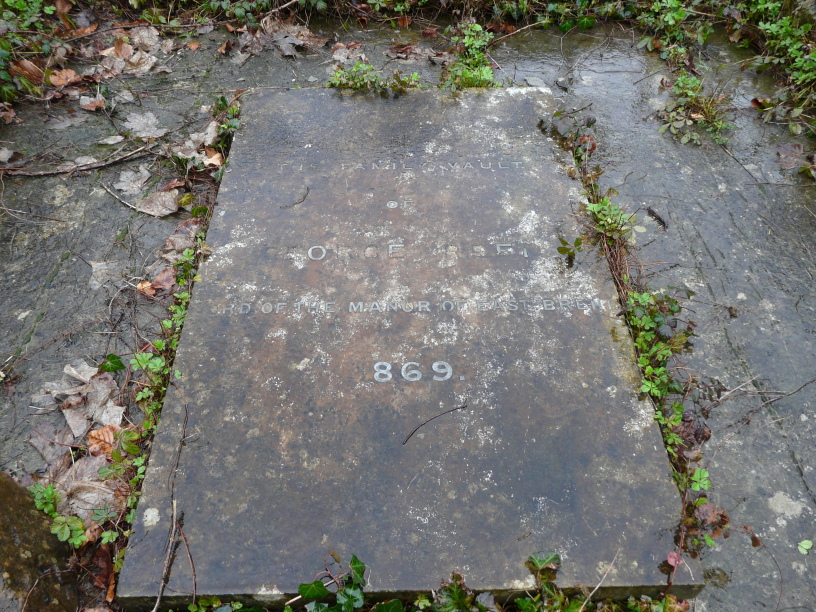
SNAPSHOTS

Extracts from The Illustrated London News, 3rd Sept 1859:
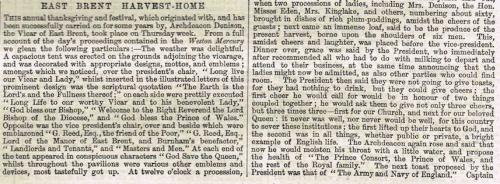
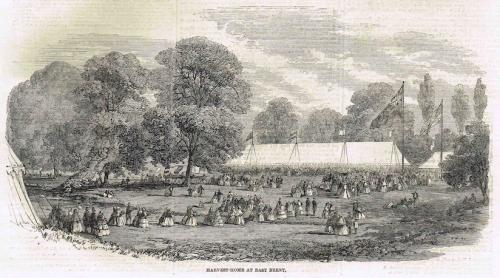
Thanks to Cedric May for picture at head of page.

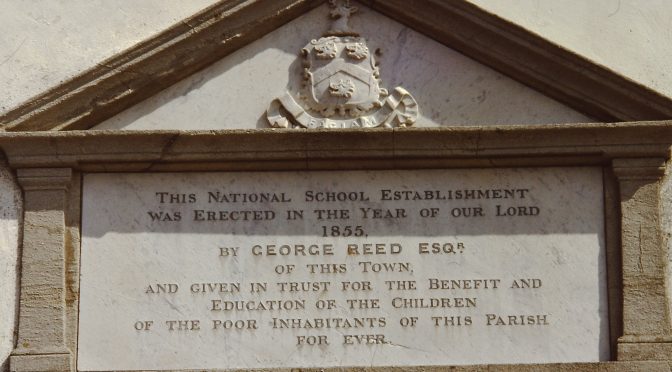
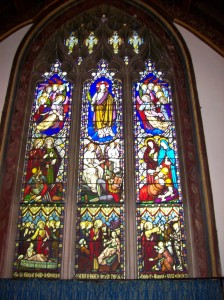
Anthony
We are still in the production stage of the booklet about George and are nearing final editing, although we don’t have a specific date for publishing it.
The consensus of opinion is that George’s mother was born as Susanna CAVIL and her birth registered at St Mary’s Bridgwater 22nd June 1778. Her father being Joseph and her mother Eliz. It is a matter of conjecture why she registered George’s baptism as Reed rather than Cavil (16th May 1805 at Holy Trinity Church, Westbury on Trym). The current theory is that George was fathered by one of the Bridgwater Reeds and it was Susannah’s way of making a statement about George’s fatherhood and an acknowledgment of his existence or perhaps some sort of entitlement. It’s certain that George was illegitimate as his baptism states he is “base born”. Could the putative father be either
a) George REED (1753 – 1829) = Salijah COATE (1750 – 1805)
b) Henry REED (1788 – 1853) = Catherine Bower SCRAGGS (1789 – 1843)
Are you a direct descendant of the Bridgwater Reed family of solicitors and do you have any additional information to add that might expand George’s story. Why especially did the Bridgwater Reeds name four sons “Haythorne” with that middle name. What was their connection with the Bristolian banker family of Haythornes? I have not been able to establish a familial link.
I have also seen newspaper reports of a there once having been a full length portrait of Susanna and also a portrait of George himself although both remain elusive. Surprisingly no photograph exists of George either.
Dear Alan,
I’m so sorry it has taken me so long to reply. As I’m not a ‘member’ I was not alerted of your reply and have just stumbled upon it.
Yes, I am a direct descendent of the solicitors of Bridgwater though my father broke the family tradition and became a doctor as did I.
I recall my father saying that the name Haythorne was given to so many Reeds in acknowledgement of “a large bequest made by a wealthy client”. I have 8 antecedents (in my tree) with Haythorne as either a first or middle name. This does seem an extraordinary honour to give to a client.
I totally agree that the likelihood is that one of the Bridgwater Reeds impreganated Susanna Cavil when she was working as a servant in Bridgwater. I suspect Henry (1788-1853) was the ‘culprit’ as he would have been 17 or so if he was the biological father of George. So was the appellation Haythorne in gratitude for taking on the pregnant mother and illegitimate child?I understand that Susanna Cavil was first employed by Joseph Haythorne as a nurse during his first wife’s final illness. The Bridgwater Reeds were a very ‘religious’ family and latterly were non-conformists/Plymouth Brethren. If there was an illegitimate child the scandal would have been huge. Also, the name is so unusual it would have raised eyebrows and hence the family lore of ‘gratitude to a rich client’. Also, how would Henry have explained it to his wife!
I suspect we may never know the truth. I have recently been in contact with a relative in Australia whose grandfather was one of the Haythorne named. I will send him an email on the off chance he can throw any light on this.
Perhaps you could alert me via email of a reply….. I think the system has blocked me adding my email as it thinks this is spam.
With best wishes,
Anthony
Dear Sir/Madadam,
Thank you for your painstaking research on George Reed (and son Joseph Haythorne Reed). Over the last few months I have been researching our family tree and feel George and Joseph must be relatives as my great grandfather (Paul Octavius Haythorne Reed of Bridgwater) and 2 of his brothers have the middle name Haythorne. This can’t be a coincidence but I have not been able to fit them into the family tree. POHR’s father was called Henry but his grandfather was George. I will see if this dialogue box accepts a screenshot of the tree. My suspicion is that my gr gr gr grandfather George (1753-1829 from Bridgwater) is the father of your George (whose mother is from Bridgwater)
Any thoughts on this?
/Users/anthonylatterreed/Desktop/Screenshot 2019-07-28 at 16.48.33.png
I don’t think the screenshot has worked but if anybody is interested I can email.
With Kind regards,
Anthony
Dr Anthony Latter Reed
Thank you for your comment and information Anthony. I have passed this on to members of the group who have done the research on George’s genealogy for their thoughts and will let you know.
Stunning content. Really interesting
A small group of fellow local historians are compiling a booklet about George’s contribution to the town and area to mark the 150th anniversary of his death, 22nd June 1869. We are still looking for documented evidence of his private, business and social life as there seems to be little record of his achievements. Do you have any information that might be of interest?